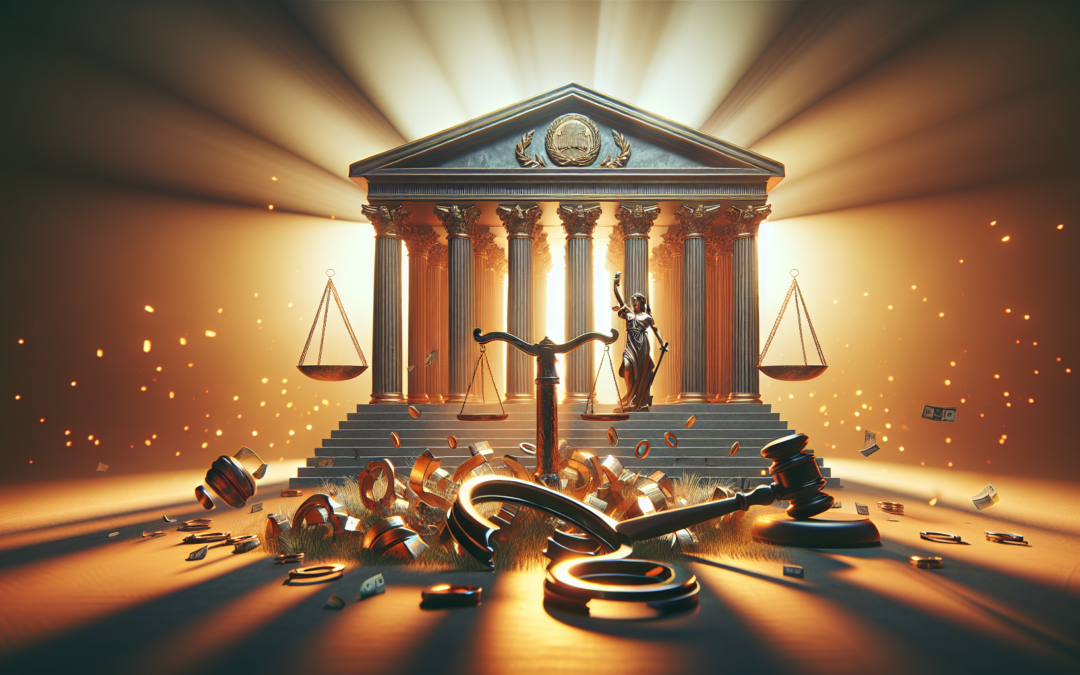The Thin Blue Line Stretched Thin: Law Enforcement in the Age of First Amendment Auditors
In towns and cities across the nation, police cruisers and protector uniforms have become the focus of a new wave of activism. The so-called “auditors” pride themselves on their perceived invincibility behind the camera lens, each interaction a potential to incite and incasper Constitutional challenges. Auditors operate on the premise of accountability, but for our men and women in blue, dealing with these provocateurs is akin to walking a current fence line of protocols and uncertainty.
The Reality Behind the Romance
To those far removed from the flashing lights and the haunting call of the police scanner, the role of a law enforcement officer might seem straightforward. Yet, beneath the surface, it is riddled with complexity. Each stop and interaction carries unpredictable outcomes. There’s pressure to make life-or-death decisions in a heartbeat’s time, and after-the-fact evaluations only add layers of scrutiny.
For officers, dealing with First Amendment auditors at times crosses into adversarial terrain. While society treasures both accountability and transparency, the dance of rights often teeters on performing for the camera rather than genuine democratic discourse. Every misstep, every misguided interpretation of a gesture or tone, becomes fodder for the public square. Understanding this dynamic cultural shift is crucial in untangling the dichotomy between lawful protest and outright provocation.
A Web of Legal Gray Areas
A significant concern for officers is navigating legal ambiguities heightened by auditors who purposely toe these lines. With smartphones and GoPros as their loudest bullhorns, auditors often challenge officers to stretch their understanding of First Amendment rights to new frontiers. Unfortunately, these engagements can become vessels of false portrayal, casting officers from defenders to unwarranted antagonists, spurring misconceptions widely shared and dissected online.
Such interactions among officers and auditors become loaded with context: the core issue is recognizing when documentation becomes harassment and deploying lawful actions backed by consensus regulations and evolving precedence. Consequently, de-escalation tactics must not only prioritize safety but be polished to reactive brilliance amidst the click-bait culture of our modern media landscape. Officers find themselves in repetitive ‘no-win’ scenarios, scrutinized overwave, shaping public sentiment, and potentially hindering proactive policing and trust-building within the community.
Champions of Community and Justice
Regardless of public perception, many officers remain resolute champions of the communities they serve—a motivation that reaches beyond personal identity. However, the fatigue that bespeaks bearing stigma and pride, critique over compassion, grows exasperating. Officers exist on the front lines in spirit and sacrifice, yet their human side is seldom shared until charity fundraisers or rare acts deem them so. They enter their profession from a calling that seeks to blend civil liberties with meaningful relationships in their beat.
The tenets of their lives anchor firmly in unwavering aspirations for justness and security. They advocate for preparation, resilience under pressure, education, and trumpeting growth. These principles have never felt more pertinent as they continually develop professionally within stress-bonds straining public parlance.
Within this imperfect dance, new policies reignite the conversation surrounding body-cam footage and justice when entangled with ‘auditors’. The endeavor fosters a rigorous reexamination of protocol, bridging comprehension gaps between law officers, judiciary bodies, policymakers, and citizens who must communicate, relate, and evolve hand-in-hand.
Affirmation and Adaptation Towards a Shared Goal
For those on the outside, it’s easy to paint with a singular brush—playing to the narrative rather than parsing the nuanced truth behind the scene. The First Amendment’s spirit was built to bolster democracy; it carries dynamism through auditors’ legitimate efforts alongside police officers’ parallel transparency drive.
But it’s time for conversations to blossom and be meaningful instead of antagonistic displays engineered for mental click and capture. A cause fosters action, not disruption. It’s a cultural evolution videogame—linking dialogue to informed understandings of modern First Amendment application manifest differently throughout policing venues from city streets to rural highways—beyond mere confrontation.
Police chiefs, policymakers, and community allies are paving avenues toward shared conduct codes that accurately reflect constitutional values in unity. Such frameworks demystify law interpretations for thematic clarity when documentary dissent evolves genuinely around delegation and reverent duties to promote fair, just societal structures.
Therefore, respectful suggestions sprout mutual trust seeds, grooming roots we strive to commandeer cooperative guidance in agreement and reverence to celebrate freedoms that benefit roles from behind cameras and badges alike.
For more engaging discussions about this and other topics with John Ligato, subscribe to his YouTube channel and watch his insightful video on this chilling state of affairs here. Join the conversation on Facebook and help shape the narrative for a more informed society where both accountability and respect preside.

Recent Comments